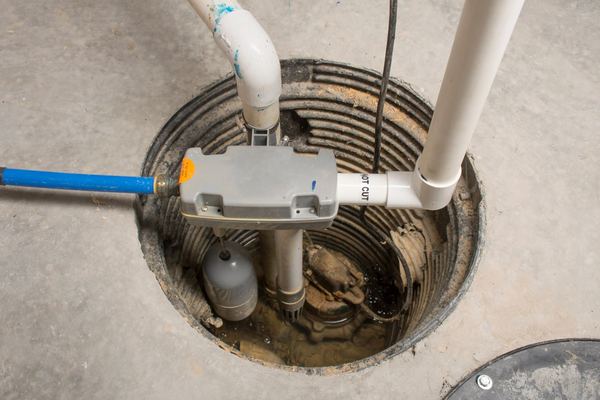Recommended Approaches for Rectifying Low Water Pressure in Your Home
Recommended Approaches for Rectifying Low Water Pressure in Your Home
Blog Article
Presented here down the page you can discover a good deal of very good guidance pertaining to Low Water Pressure in the House?.

Low tide stress in your home can be a frustrating issue, affecting whatever from bathing to washing meals. If you're experiencing weak water flow, there are a number of feasible causes and services to check out. In this guide, we'll review common reasons for low water stress and functional steps to address the problem successfully.
Introduction to Low Water Pressure
Low water pressure occurs when the circulation of water from your taps, showers, and various other fixtures is weak than normal. This can make daily tasks much more tough and less effective. Understanding the causes of low water stress is important to discovering the appropriate option.
Common Causes of Low Water Stress
Faulty Stress Regulatory Authorities
Pressure regulators are responsible for keeping constant water stress in your home. If they malfunction, it can lead to low tide pressure or unequal circulation throughout your house.
Municipal Water Supply Issues
Occasionally, the problem lies outside your home. Local water system concerns, such as main line leakages or maintenance job, can briefly reduce water pressure in your location.
Pipe Obstructions
Over time, pipes can end up being obstructed with natural resource, debris, or debris, limiting the circulation of water. This is an usual issue in older homes with galvanized steel pipes.
Corrosion
Deterioration within pipelines can result in leaks and lowered water stress. Rust build-up can constrict water circulation, particularly in aging plumbing systems.
How to Diagnose Low Water Pressure
Evaluating Pipes
Evaluate visible pipes for indications of leakages, rust, or blockages. Pay attention to any type of uncommon audios, such as knocking or rattling pipelines, which might suggest problems within the plumbing system.
Consulting with a Plumber
If you're incapable to identify the cause of low tide stress, think about hiring a specialist plumber to perform a detailed inspection. They can recognize underlying concerns and suggest proper remedies.
Inspecting Faucets and Fixtures
Start by checking the water pressure at various faucets and components throughout your home. If the concern is separated to details areas, it might show localized issues.
DIY Solutions to Take Care Of Low Water Pressure
Flushing Water Heater
Debris build-up in the hot water heater can restrict flow and minimize performance. Purging the container periodically helps remove sediment and keep optimal performance.
Checking Pressure Regulator
Make sure that the pressure regulator is functioning properly. Changing or replacing the regulator can aid recover correct water stress throughout your home.
Cleaning Up Aerators and Showerheads
Mineral deposits can accumulate in aerators and showerheads, decreasing water flow. Get rid of and clean up these components routinely to improve water stress.
Clearing Clogs in Piping
For minor clogs, attempt using a plumbing serpent or chemical drain cleaner to clear blockages in pipelines. Beware when using chemicals and follow safety and security guidelines.
When to Call an Expert Plumber
If do it yourself efforts stop working to fix the concern or if you suspect considerable plumbing issues, it's ideal to seek aid from an accredited plumber. They have the knowledge and devices to resolve complex problems securely and effectively.
Safety Nets to Preserve Water Stress
Setting Up a Pressure Booster
Consider setting up a pressure booster pump to enhance water stress in locations with constantly low flow. This can be especially useful for multi-story homes or residential or commercial properties with high-demand components.
Surveillance Water Use
Be mindful of water usage routines and avoid overtaxing the plumbing system. Easy modifications, such as staggering showers and laundry lots, can aid preserve ample water pressure.
Normal Maintenance
Set up routine maintenance for your plumbing system to stop issues such as rust, leakages, and clogs. Attending to small problems early can assist avoid more considerable fixings later on.
Conclusion
Handling low water pressure can be frustrating, but identifying the underlying causes and implementing proper services can recover optimal flow throughout your home. Whether it's cleaning aerators, examining pipelines, or talking to a plumber, taking proactive actions can make sure a consistent supply of water for your everyday demands.
FOUR WAYS TO FIX LOW WATER PRESSURE NOW
Turning on a shower or faucet only to find the water comes out in a sad, slow drizzle is never a good feeling. How exactly are you supposed to wash a pan or take a quick shower when it takes 10 minutes just to rinse off a little soap? The good news is that when your water pressure is bad, there's always a cause: typically one that can be easily fixed. Here are some of the most common causes of low pressure and what you can do to fix the issue:
DEBRIS AND MINERAL DEPOSIT BUILDUPS
If you notice low water pressure from just one or two of the fixtures in your house, the problem likely has to do with debris buildup. Water is full of minerals and other debris, all of which can accumulate in your pipes and on your fixtures. This can cause a blockage that affects how much water flows through. To fix this, try filling a small plastic bag with white vinegar, and use a rubber band to hang it around your showerhead or faucet. Let the head of the fixture soak for a few hours, and the vinegar should loosen the deposits.
WATER LEAKS
Leaks are another common cause of low water pressure. If water is flowing out of your plumbing through a hole or crack before it can reach your fixture, the pressure coming out of the faucet or showerhead will be lower. A plumbing professional is your best bet for finding and repairing a leak in your water supply pipes.
Leaks are another common cause of low water pressure. If water is flowing out of your plumbing through a hole or crack before it can reach your fixture, the pressure coming out of the faucet or showerhead will be lower. A plumbing professional is your best bet for finding and repairing a leak in your water supply pipes.
A VALVE ISSUE
If you have low water pressure throughout your home, check your main shut-off valve to make sure it's completely open. You may also want to see if there's a pressure-reducing valve installed. If there is, have a plumber help you adjust the settings to get the pressure you're looking for.
OTHERS USING WATER
Believe it or not, your low water pressure could be caused by your neighbors. If you notice low pressure at certain times of day, it may be because you and the people living next to you have similar schedules - when everyone is showering at the same time, the pressure will be lower in every home. Low pressure throughout the neighborhood may also be caused by an issue with your municipal water supply. If that's the case, call the supplier to see if they're working on the issue.
https://www.rotorooter.com/blog/water-leaking/low-water-pressure-fixes/

I stumbled upon that content on 4 Ways to Troubleshoot Low Water Pressure while perusing the search engines. Appreciated our content? Please quickly share it. Let somebody else locate it. Thanks so much for taking the time to read it.
Call Today Report this page